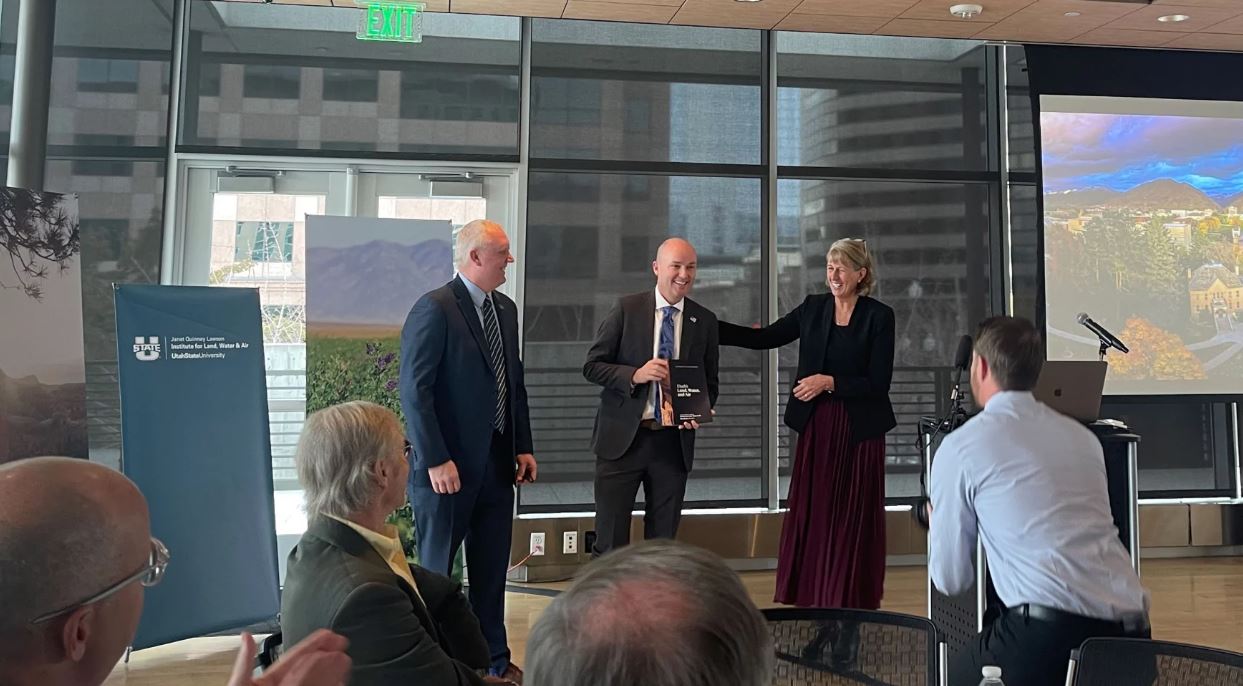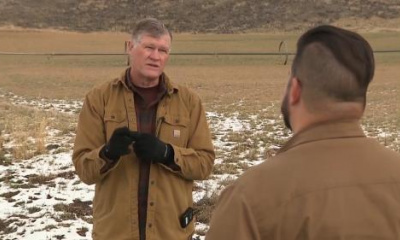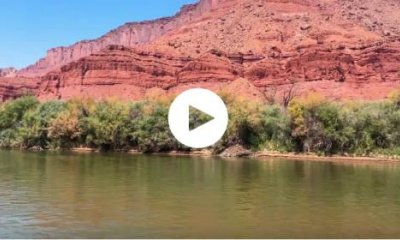A report published by the Utah State University Institute of Land, Water and Air shows that Utah’s rapid population growth could further strain the state’s limited natural resources.
A group of researchers with the institute presented the annual report to Gov. Spencer Cox Thursday in Salt Lake City.
The governor said the report couldn’t have come at a better time as lawmakers prepare for the legislative session and Cox builds his 2023 budget proposal.
“I hear this kind of theme out there that we are raising the first generation in history whose lives will be worse than their parents,” Cox said. “And I reject that completely.”
The resource strain
The report projects Utah’s population will jump to an estimated 5.5 million by 2060. Data released Dec. 1 from the Kem C. Gardner Policy Institute show the state is currently home to just over 3.4 million.
Utah though has experienced a decline in precipitation, higher temperatures and saw more rain instead of snow since 1950. In turn, Great Salt Lake has hit record-low water levels, and natural flow to the state’s reservoirs and lakes has dropped significantly while water consumption has increased with the population.
“We are using more water than is naturally available,” the report reads.
A top priority for Joel Ferry, executive director of the Utah Department of Natural Resources, is getting fresh water into Great Salt Lake. Ferry said achieving that would help offset the ecological collapse that has already begun.
He is hopeful some legislation aimed at treating water that flows into the iconic lake will make it to the floor of the legislature.
Ferry emphasized that in order for Utah to stretch the dwindling resource, the state needs to fork over funding. He would also like to see the legislature invest more money into water optimization, especially in agriculture.
“We want to help agriculture survive and thrive and be as efficient as possible with their water,” he said.
If the legislature does allocate more money to water resources, Ferry said the department could pour more energy into cloud seeding that would “increase the amount of water that's coming out of the storms that are passing our state.”
Utah state Rep. Joel Briscoe, D-Salt Lake, expects the legislature to address “Utah’s love for grass” in the upcoming session.
He also hinted at lawmakers making some “modifications” to state incentives to preserve water, like potentially paying farmers to conserve more.
“I think we'll see more incentives,” he said, not specifying what exactly those incentives would be.
Smart growth
Both the researchers and the governor applauded the state for strong water conservation efforts In 2022. The report stresses that long-term solutions are needed to continue the positive trend.
As the population continues to grow, it recommends that different state entities work together to determine the best sustainable use of water in urban developments.
During the 2022 legislative session, lawmakers passed SB 110, which went into effect this May and requires cities and counties to plan for water use ahead of development.
“Let's be efficient in our planning. That's going to help. And I think we can do even more of that than we have,” Rep. Briscoe said.
The challenge, Ferry said, is balancing the water needs of different users. Utah water law states those who obtained a water right first have priority access to the resource. As a result, other users lower on the priority list could end up with none.
For Ferry, that means the department works in tandem with urban developments to plan ahead for water use.
“How can we help them guide zoning and other decisions that they're making in their planning process so that we don't get to a situation where a city has to either stop growing or can't supply water to its citizens because of growth that's already occurred,” Ferry said.
USU is also working with the Utah Division of Water Resources and other state entities to create a guidebook that would integrate land and water use planning for current and future development projects.
Gov. Cox stressed Utah has the answers to the pressing land, water and air problems. But the solutions will take time, effort and resources.
“We can make sure that the next generation is better off than this generation,” he said. “We just have to be smart about it.”








